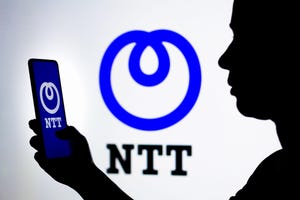CenturyLink and Sprint agree that virtualization will get services to market faster, but it won't initially pay off in lower costs.
October 30, 2013

SAN JOSE — Digital Disruption 2013 — Contrary to popular opinion, software-defined networking will not produce major capex savings for network operators, according to the two men responsible for virtualization strategy at CenturyLink and at Sprint.
Speaking on a Tuesday afternoon panel here on the impact of virtualization, James Feger, vice president, network strategy and development for CenturyLink, and Fred Feisullin, senior network architect in the CTO's office of Sprint, said there are advantages to deploying SDN and network functions virtualization (NFV), including getting new services to market quickly and, at some future point, opex savings. But capex savings isn't something they are expecting.
"When it comes to capex, I'd say it's a wash," Feger said. "Can I buy a virtual router today that is cheaper than buying a regular router? Sure. But transforming the telco environment into an SDN/NFV environment initially is going to cost more."
Telco central offices weren't built to house datacenter equipment and will need to be outfitted to do that, making the total cost of ownership (TCO) of a virtualized network about the same as today's capex budgets, he said.
In Sprint's case, the initial move to virtualization will take place in the evolved packet core, which isn't where most of the wireless network operator's costs lie, Feisullin explained.
"The core is a fraction of our capex, our costs are in the radio access network, mostly in radios, and those aren't going to be virtualized right now," he said. "The bigger gains are the new revenue sources that can be generated, then followed on by lower opex which will take much longer to be realized, then capex, maybe."
Like Feger, Feisullin sees higher opex associated with the initial deployment of new equipment to "get the infrastructure to work."
There may be more capex savings at the edge of the network and in CPE, such as set-top boxes, Feger said.
One further challenge in the early days of SDN/NFV is that creating virtual functions running on commercial off-the-shelf hardware creates complex operations challenges in the era when each function may be managed by a different siloed management system, Feger said.
New services acceleration and the ability to "fail fast" -- i.e., try something and then shut it down quickly if it doesn’t work -- are key advantages to a virtualized approach, according to both men. They balked at a suggestion from fellow panelist Jeff Edlund, CTO of CMS-Enterprise Solutions at Hewlett Packard, however, that network operators are willing to accept a lower level of overall reliability when they move more functions to COTS gear that is not built for the five nines of proprietary telecom boxes.
"It's not that we are tolerant of fewer nines or less reliability," Feger said. In a virtualized network, the reliability burden may be shared among multiple boxes that are logically connected rather being built into a more expensive individual component.
Service providers are willing to move ahead of standards development, however, because they see virtualization as important to future business models and may, in fact, be influencing standards by what they deploy and use, Feger said.
Feisullin sees "as many different strategies out there as there are service providers," when it comes to what to virtualize first and how much legacy gear continues to function for some time to come.
He also credited ETSI with getting the ball rolling on NFV, regardless of where its standards process ends up.
"ETSI is already a success because it has torn down walls between service providers and vendors and between vendors and that has shaved years the deployment cycles," Feisullin said. "Are we there yet? No, we have a long way to go."
— Carol Wilson, Editor-at-Large, Light Reading
You May Also Like









